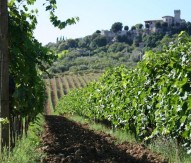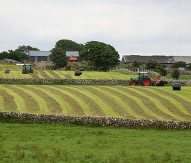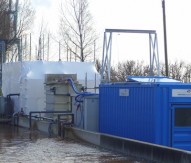
Flowing in the right direction
Increasing water sustainability is a key challenge not just for Europe, but the entire planet. Industry accounts for a significant proportion of water consumption, with estimates predicting this usage to increase by 50% between 1995 and 2025. Consequently, projects focusing on increasing water efficiency have been a key focus for research funding.
Defined as a success story by the European Commission under FP7, the Aquafit4Use project received over two thirds of its total project funding from the EU. The project, which ran from January 2008 to May 2012, focused on helping to increase water sustainability and conservation in the water-intensive industries of paper, food, textiles and chemicals. The multinational project also reflected a commitment to international collaboration, a key aspect replicated in Horizon 2020. The scheme was co-ordinated in the Netherlands and included input from ten other EU member states, including the Czech Republic, Spain, Germany, France, Sweden and Slovenia.
Willy van Tongeren is the senior project manager of the water treatment department at the independent Dutch research organisation TNO and was the project co-ordinator for Aquafit4Use. In a Commission report of FP7 project achievements, he outlined the background to the €14.5m project.
“It is common that the quality of water used [in industry] is unnecessarily high – often drinking water – to be on the safe side. This is not needed, but most industries do not really know what the real demands for their processes are.
“The aims of the Aquafit4Use project are to provide ways of achieving sustainable water use in the four industries by identifying and precisely meeting these ‘real demands’. The hope is that this should lead to a reduction in freshwater needs of as much as 30%.”
The project achieved a number of accomplishments, including the development of a new water quality management software to help industry better define their water quality needs; a new technology to remove salt from cooling water leading to the reduced use of freshwater; and pioneering tests on non-chemical technology to prevent biofouling. Several combinations of existing and enabling technologies were also tested for different applications of water reuse.
Horizon 2020 will bring together all existing EU research and innovation funding as well as elements of the Competitiveness and Innovation Framework Programme and the European Institute of Innovation and Technology. With an extensive knowledge of working with the European Commission under FP7, van Tongeren outlined to Horizon2020projects.com his thoughts on the replacement to the Seventh Framework Programme.
“I am in general very positive about the changes introduced under Horizon 2020 compared to FP7. Horizon 2020 will bring together more programmes with a stronger emphasis at the coupling of research to innovation as well as a focus on tackling the key challenges facing society. This will lead to more applied research, but on the other hand gives enough emphasis to supporting an excellent science base and building industrial leadership in Europe which are the other main priorities.
“The Societal Challenges pillar, as defined in Horizon 2020, covers a number of issues relevant at supranational level. However, I believe it should be also aligned and connected with the priorities as defined by EU member states in the European Commission’s Joint Programming Initiatives in order to create synergies between the two programmes,” van Tongeren commented.
The new research and innovation framework programme will be more proactive and industry-led compared to FP7 with the introduction of simpler rules making it easier for businesses and academic institutions to become involved. However, such changes could be detrimental to the funding grants new participants says van Tongeren.
“Horizon 2020 will encourage bottom-up research, as opposed to prescriptive top-down research which is a good move, as well as more open and broader calls in the various work programmes.
“The simplification of the rules is another area I also welcome, particularly with the expected reduction in the time to grant (the duration from the original call to the beginning of a project) being reduced by an average 100 days.
“Yet one concern I do have though is regarding the new funding conditions. The single flat rate of 20% for the reimbursement of indirect costs could cause many problems for universities, research institutes and research and technology organisations (RTOs). These institutions are key players in R&D and often have high indirect expenditure and a very different cost structure to businesses; they also do not have the ability to cover costs via national programmes,” he outlines.
“The involvement of research organisations is essential to help SMEs further develop new innovations. Many SMEs are involved via the RTOs, which act as a link between universities and businesses, and it will certainly impact indirectly on SME participation.”
Although it is too early to make concrete plans to apply for Horizon 2020 funding with the first calls expected at the beginning of next year, van Tongeren says there is scope for the project to continue.
“Horizon 2020 funding is a key priority for TNO as it represents a large proportion of our funding (10% of our revenue). TNO is especially interested in the topics related to the Societal Challenges pillar and the Key Enabling Technologies. The new, greater focus on innovation and more applied research also fits well with TNO’s ambitions.
“Whether we will continue Aquafit4Use under Horizon 2020 of course depends on the upcoming calls, but the priorities of Horizon 2020, especially looking for innovative solutions to Europe’s societal challenges will certainly lead to follow-up.
“We have also just started a new project in one of the final calls of FP7 on resource efficiency (including water, nutrients and energy) in the food sector known as RESFOOD which could be viewed as a spin-off to AquaFit4Use. But I expect that we will be able to contribute to the ambitions of Horizon 2020 and get a lot of projects funded,” van Tongeren added.
Willy van Tongeren




